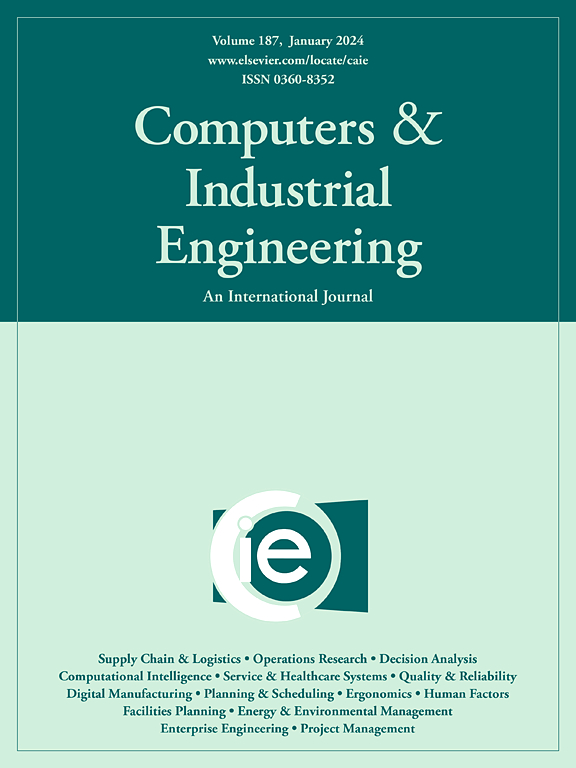Multi-objective integrated harvest and distribution scheduling for fresh agricultural products with farm-to-door requirements using Q-learning and problem knowledge-based cooperative evolutionary algorithms
IF 6.7
1区 工程技术
Q1 COMPUTER SCIENCE, INTERDISCIPLINARY APPLICATIONS
引用次数: 0
Abstract
Due to growing concerns about food safety and dietary health, the freshness and quality of fresh agricultural products (FAPs) are becoming increasingly important. The farm-to-door supply mode is a promising method for delivering FAPs with high freshness and quality by shortening supply chains. This supply mode is characterized by scheduling harvest and distribution together, which is more complex than scheduling the two activities independently. It is challenging to simultaneously make multiple decisions related to the harvest and distribution stages and handle their relationships to achieve overall optimization. These challenges create the need for particular modelling and optimization approaches to improve operation efficiency. To this end, this study proposes a multi-objective integrated FAP harvest and distribution scheduling problem. First, a mathematical model is formulated to minimize the total operation cost and maximize customer satisfaction. Second, a Q-learning-based cooperative evolutionary algorithm with problem-specific knowledge (Q-CEA-K) is developed, in which the population and Pareto archive execute global and local searches, respectively. Two heuristic rules based on problem-specific knowledge are designed to produce initial solutions, and five properties are derived and used to develop knowledge-based local search methods. Cooperative strategies are proposed to realize collaborative search between the population and Pareto archive. Furthermore, the Q-learning method is used to select a search framework for the population. Finally, Q-CEA-K is compared with three state-of-the-art algorithms and a mathematical programming solver CPLEX through extensive experiments. The comparison and statistical analysis results confirm the superiority of Q-CEA-K in solving the problem under consideration.
求助全文
约1分钟内获得全文
求助全文
来源期刊

Computers & Industrial Engineering
工程技术-工程:工业
CiteScore
12.70
自引率
12.70%
发文量
794
审稿时长
10.6 months
期刊介绍:
Computers & Industrial Engineering (CAIE) is dedicated to researchers, educators, and practitioners in industrial engineering and related fields. Pioneering the integration of computers in research, education, and practice, industrial engineering has evolved to make computers and electronic communication integral to its domain. CAIE publishes original contributions focusing on the development of novel computerized methodologies to address industrial engineering problems. It also highlights the applications of these methodologies to issues within the broader industrial engineering and associated communities. The journal actively encourages submissions that push the boundaries of fundamental theories and concepts in industrial engineering techniques.
 求助内容:
求助内容: 应助结果提醒方式:
应助结果提醒方式:


